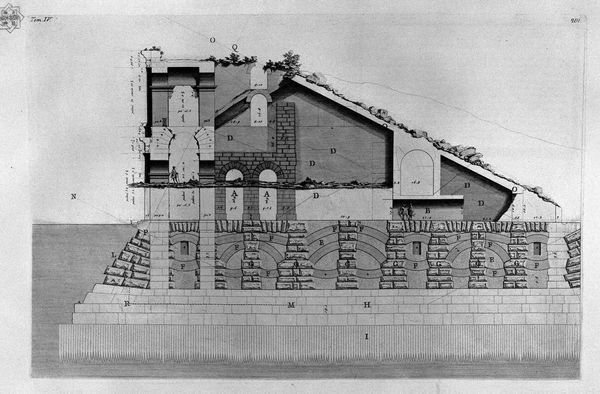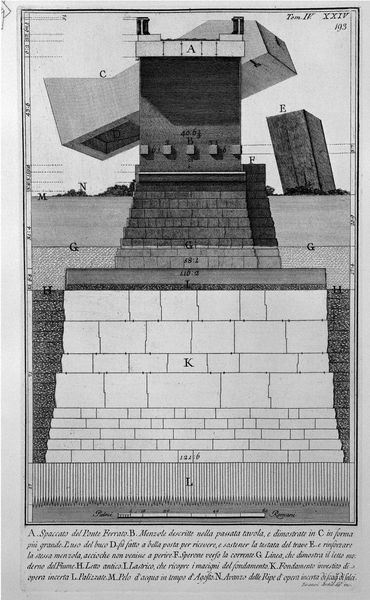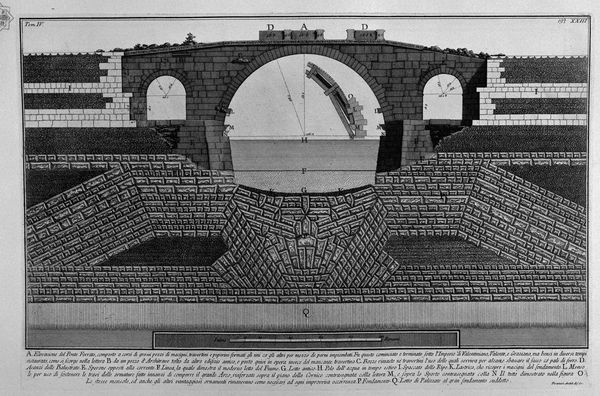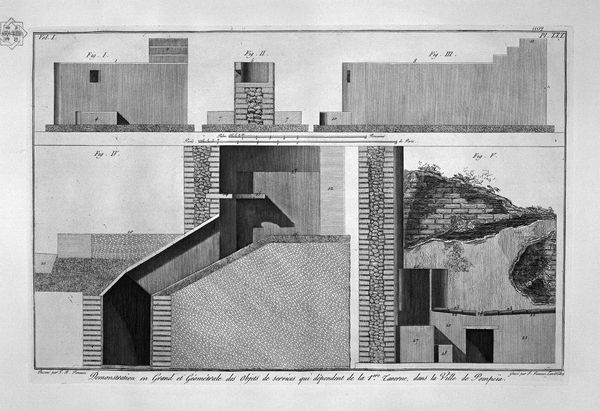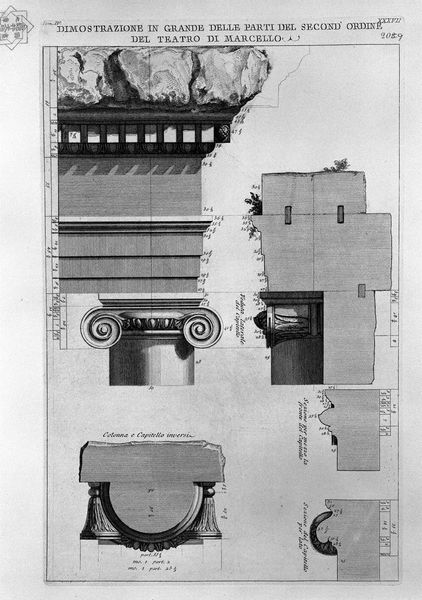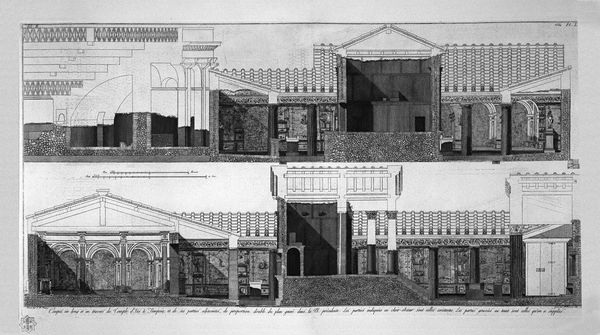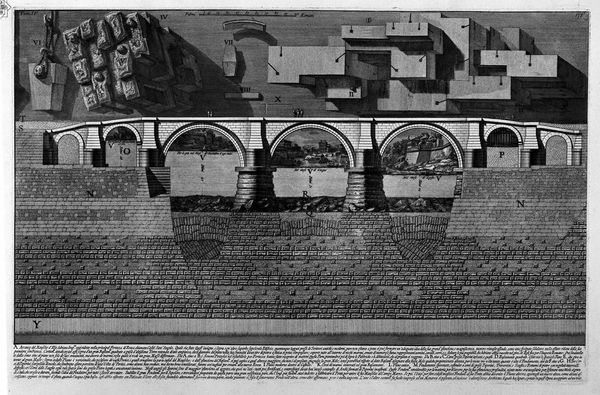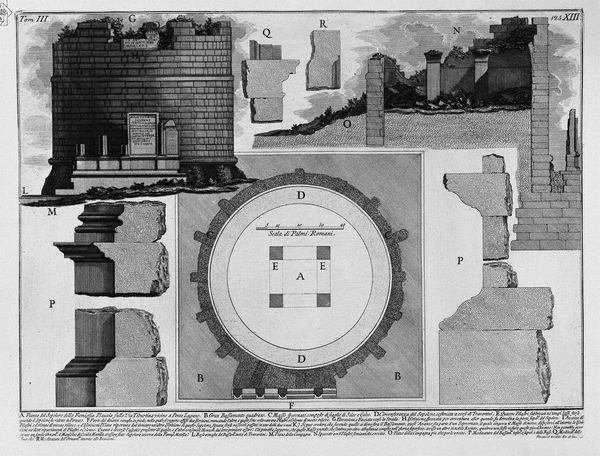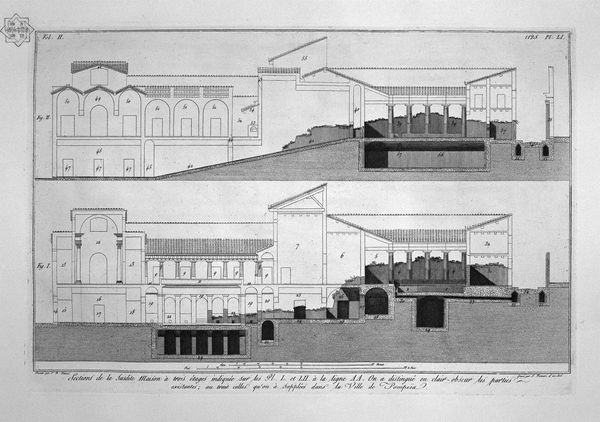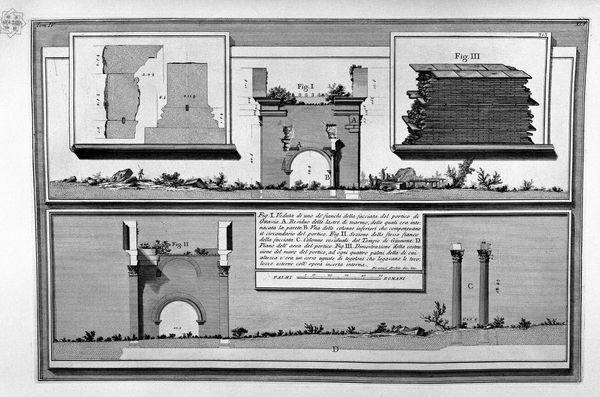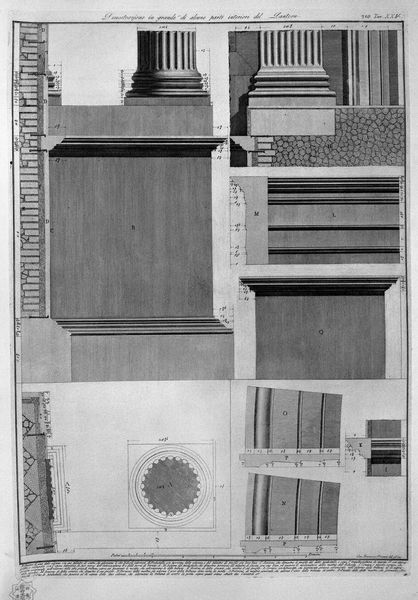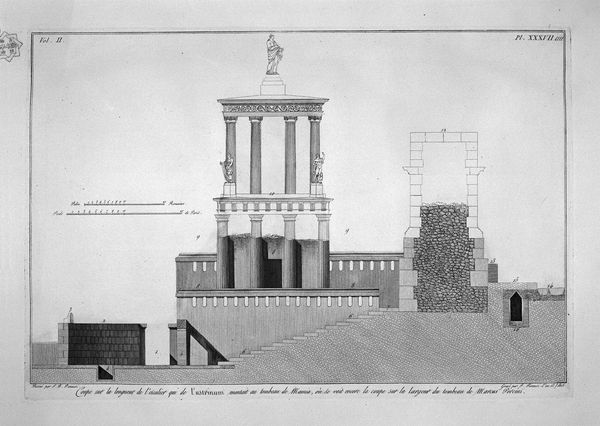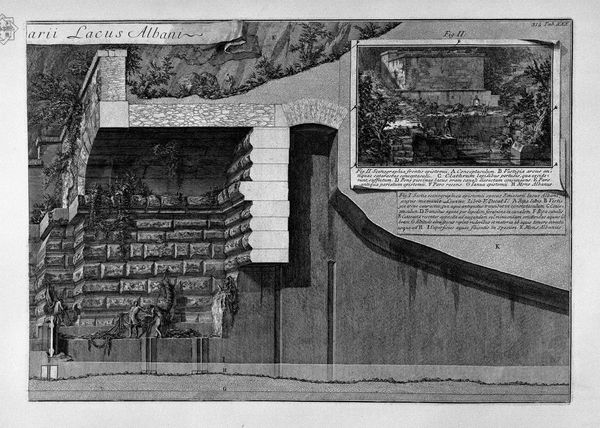
The Roman antiquities, t. 4, Plate XXIX. Following the above table.
0:00
0:00
drawing, graphic-art, print, etching, engraving, architecture
#
drawing
#
graphic-art
#
neoclacissism
# print
#
etching
#
landscape
#
ancient-mediterranean
#
engraving
#
architecture
Copyright: Public domain
Editor: This etching is titled "The Roman Antiquities," from Volume 4, Plate XXIX, by Giovanni Battista Piranesi. It's all in black and white, depicting what appears to be a cross-section of a very old Roman structure. The level of detail is amazing. What really stands out to me is the way the artist balances detailed architectural rendering with a more imaginative landscape. What strikes you most about this piece? Curator: What immediately captures my attention is the work’s articulation of space through line and form. Notice how Piranesi employs linear perspective not merely to represent depth, but as a tool to structure the composition. The precise etching technique lends a certain monumentality to the depicted architecture. Editor: Monumentality, yes. And that diagram floating in the upper right, what is it doing there, formally? Curator: Indeed, consider the juxtaposition of the realistic depiction against the more abstracted diagrammatic elements. This challenges the viewer to reconcile different modes of representation. Ask yourself, what are the formal properties that allow Piranesi to achieve this striking sense of spatial complexity on a two-dimensional plane? Editor: I see what you mean about space. The lines aren't just describing the ruins; they're creating a very intricate, almost dizzying, spatial game. Curator: Precisely. Observe, too, how the texture created through varied line weights invites tactile consideration. It makes one contemplate the very materiality of the image. This tactile quality almost seems to compete with the planar surface of the print itself, creating visual tension. Editor: So it's less about *what* is depicted and more about *how* it’s depicted – the lines, the forms, the contrasts themselves creating the meaning. I’ll certainly think more about that when I look at prints from now on. Curator: And by analyzing the forms and lines so diligently, one begins to unlock more questions than answers, regarding how we interact and conceptualize space itself, represented through art.
Comments
No comments
Be the first to comment and join the conversation on the ultimate creative platform.
